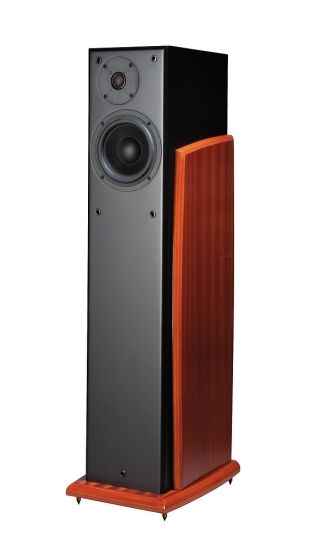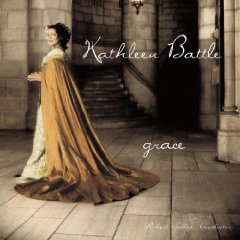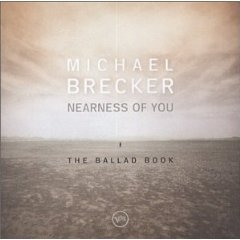AUDES Credo Adagio loudspeaker
| Here’s to Life |
|
|
|
September 2008 |
No complaints and no regrets
I still believe and chasing dreams and placing bets
but I had learn that all you give is all you get
so give it all you got
 Based in Estonia, formerly a part of the Soviet Republic, Audes began the auspicious art of designing high-grade loudspeakers in 1984. Building on its electronics heritage, Audes has since grown into a multifaceted loudspeaker manufacturer that now offers a full line of affordably priced and handsomely built products. CP, our fearless leader, had favorably reviewed the Audes model 037, a $1200.00 4-way back in the summer of ’01. As good as the 037 performed (I remember it fondly), it was the price that stuck out in my mind along with its high-price performance. That particular loudspeaker had to get my vote as the biggest “Bang for the Buck” high-end loudspeaker I’ve seen and heard. Trust me, I, along with many friends, don’t have the disposable income this hobby would like to flourish on. Of course this meant Audes would be the loudspeaker of choice among many budget conscience audiophiles.
Based in Estonia, formerly a part of the Soviet Republic, Audes began the auspicious art of designing high-grade loudspeakers in 1984. Building on its electronics heritage, Audes has since grown into a multifaceted loudspeaker manufacturer that now offers a full line of affordably priced and handsomely built products. CP, our fearless leader, had favorably reviewed the Audes model 037, a $1200.00 4-way back in the summer of ’01. As good as the 037 performed (I remember it fondly), it was the price that stuck out in my mind along with its high-price performance. That particular loudspeaker had to get my vote as the biggest “Bang for the Buck” high-end loudspeaker I’ve seen and heard. Trust me, I, along with many friends, don’t have the disposable income this hobby would like to flourish on. Of course this meant Audes would be the loudspeaker of choice among many budget conscience audiophiles.
Life’s demands, on the other hand, had me consumed. I work as a Club DJ at night and record producer by day (and that’s the short list). Having spent what was arguably too much time hanging out with CP over the past 15 years, listening to the myriad high-end electronics that came and went , I eventually got hooked, lined and sunk into this remarkable hobby of music appreciation. My official indoctrination—to critical audiophile setup and playback, not musical appreciation—occurred during the Rocky Mountain Audio Fest back in ’06. Along the way, I started dipping and dabbing with a small setup thanks again to Stereo Times. But you could have taken me out of the oven and stuck a fork in me after accompanying CP to Munich this past May. Trust me, I was DONE.
The many years spent in the studios, mixing and recording, playing keyboards, singing and working as a voice instructor fueled my passion for music. The experiences made me appreciative and grateful but simultaneously more critical of everything I was listening to. I was doomed to become a full-fledged audiophile.
When the president of Audes USA, Naum Dorkham contacted CP regarding his new and exciting loudspeaker, the Credo Adagio, I jumped at the opportunity, both because of my previous sonic experiences and because their price ($1995) is within my modest budget.
I had my share I drank my fill
and even though I’m satisfied I’m hungry still
to see what down the other road behind the hill
and do it all again
The Adagio’s are (a hair under 40”) tall, two-way floor standers in Audes’ more affordable Credo lineup: other, more expensive Credo designs include the bigger Grand Blues, Blues, Jazz and the smaller Studio mini-monitor. The Adagio’s 1” soft-domed tweeter is designed offset to the side and above the 6 ½” SEAS woofer. Audes claims to modify all drivers in-house to their own specifications. Audes recommends mirror-image placement for the Adagios, with the tweeters toward the outer edges (as these are situated closer to the loudspeakers edges). Aesthetically, these loudspeakers are quite attractive by way of their curved, stained and paneled siding. The Adagios have gold plated 5-way binding posts that allow for bi-wiring. Setting up the Adagios was a cinch. The only assembly required was screwing the plinth to the bottom of the speaker cabinet (the holes are predrilled). Audes recommends spikes (supplied), along with tiny cups for uncarpeted floors. The Adagios weigh a hefty 57 lbs which make this two-way, rear ported design somewhat substantial. Sensitivity is rated at only 86 dB while the Adagios’ impedance is 8 Ohms. Based on these stats, I would make an educated guess the Adagios like a good and beefy amplifier with at least 50 watts minimum per channel. Personally, I like the 40” height of the Adagios as they morph right into my wall space and don’t make themselves too noticeable. That is, until they’re turned on.
I installed the Adagios about seven feet apart with very little toe-in and in very close quarters to the front wall behind them. I simply could not get them out any further than 18” without upsetting my living situation. For amplification I used Bel Canto REF 1000 mono power amps and a Musical Fidelity preamp/surround processor. CD playback was via an Audiomeca Mephisto ILX. Cabling was the Acoustic Revive speaker cable, along with a RTP2 AC conditioner. Last, I added the 4 PS Audio Harvesters AC Line Converters to my power source. Needless to say, I was ready for the Adagios but the question was, were the Adagios ready for me?
They answered that question in short time. Out of the box, I was immediately impressed by the ease and accuracy of the Adagios sonics.
So here’s to life
and every joy it brings
so here’s to life
to dreamers and their dreams
My reference Von Schweikert VR-1 monitors along with the Von Schweikert sub-woofer were neatly tucked away in another room. Although life was quite a happy place with them, I knew that I was about to embark into some real serious competition.
 One of my favorite vocalists is the late, great Shirley Horn. Her remarkably tender, sweet and whispery accents on “Summer (Estate)” taken from her soulfulHere’s to Life CD is a standard of mine that stays in steady rotation. Upon first listen through the Adagios, I noticed a marked difference from my reference Von Schweikert VR1s (which I use with a VS subwoofer); not surprising perhaps as the VR system consists of a minimonitors and a dedicated powered subwoofer sporting crossover/phase controls. That said, there’s something fundamentally “right sounding” about having all drivers in the same plane and in very close proximity to each other.
One of my favorite vocalists is the late, great Shirley Horn. Her remarkably tender, sweet and whispery accents on “Summer (Estate)” taken from her soulfulHere’s to Life CD is a standard of mine that stays in steady rotation. Upon first listen through the Adagios, I noticed a marked difference from my reference Von Schweikert VR1s (which I use with a VS subwoofer); not surprising perhaps as the VR system consists of a minimonitors and a dedicated powered subwoofer sporting crossover/phase controls. That said, there’s something fundamentally “right sounding” about having all drivers in the same plane and in very close proximity to each other.
Whoever penned “less is more” deserves a cigar. The Adagio’s illustrated this by way of their tonal “rightness” that was evident by an improved purity quotient. If this is what happens when you keep the integrity of drivers together, thus lowering their possible phase anomalies, then it is only now – thanks to the Adagios’ simplistic two-way design – that I fully understand the philosophy. And this really shows itself in the reproduction of the human voice. Surprisingly, everything I played sounded delightfully more natural and even-handed across the audio spectrum.
The Adagios infused a new sense of foot-tapping vibrancy that had eluded my listening space prior to their arrival.
Funny, how the times just flies
a love can go from warm hellos to sad goodbyes
and leave you with the memories you memorized
to keep your winters warm
The Adagios’ performance improved in the first 100 or-so hours of constant burn-in The bass became ever-so slightly less boxy and better defined in the lowest octaves. The Adagios’ sound-stage appeared seamless and instruments breathed life on a wider and more believable and three-dimensional soundstage. After the 100 hour mark, I was getting more ambient information in my listening space with cymbals and piano sounds hanging longer and fading slower into blackness.
 I liked the fact that on silent passages, regardless of volume, everything appeared quieter — making the quiet appear palpable. I became completely enthralled by the depth and ability of the Adagios to capture the pianissimos and crescendos of another of my favorite classical pieces, namely Kathleen Battle’s rendition of “Schlafendes Jesuskind from Morike-Lieder III, No. 25” from the CD entitled Grace. I was transported to another place and time whilst listening to Ave Maria, based on the intermezzo from Cavalleria Rusticana. If you haven’t heard Ms. Battle, I implore you to do so. I became overwhelmed and almost moved to tears by the shear overall placement of the harp and strings in compliment to Kathleen’s beautiful, lyrical soprano genius. The Adagios allowed the appreciation to come through as natural as I’ve heard, rather experienced, in my listening space.
I liked the fact that on silent passages, regardless of volume, everything appeared quieter — making the quiet appear palpable. I became completely enthralled by the depth and ability of the Adagios to capture the pianissimos and crescendos of another of my favorite classical pieces, namely Kathleen Battle’s rendition of “Schlafendes Jesuskind from Morike-Lieder III, No. 25” from the CD entitled Grace. I was transported to another place and time whilst listening to Ave Maria, based on the intermezzo from Cavalleria Rusticana. If you haven’t heard Ms. Battle, I implore you to do so. I became overwhelmed and almost moved to tears by the shear overall placement of the harp and strings in compliment to Kathleen’s beautiful, lyrical soprano genius. The Adagios allowed the appreciation to come through as natural as I’ve heard, rather experienced, in my listening space.
 Finally, enjoying the late Michael Brecker’s Grammy Award Winning CD “Nearness of You – The Ballard Book” featuring such luminaries as Herbie Hancock, Pat Metheny, Charlie Haden, Jack DeJohnette and James Taylor put everything about the Adagios in proper perspective. I simply could not stop playing “NASCENTE.” Brecker’s sax delivery kept me grounded while Pat Metheny gave a haunting but nonetheless Metheny-ish solo to the piece (always on electronic). DeJohnette didn’t disappoint with the cymbal accents that seemed to illuminate the song further —thanks in part to the Adagios soft-dome tweeter. Everyone involved in this project was top-notch, hence a well deserved Grammy.
Finally, enjoying the late Michael Brecker’s Grammy Award Winning CD “Nearness of You – The Ballard Book” featuring such luminaries as Herbie Hancock, Pat Metheny, Charlie Haden, Jack DeJohnette and James Taylor put everything about the Adagios in proper perspective. I simply could not stop playing “NASCENTE.” Brecker’s sax delivery kept me grounded while Pat Metheny gave a haunting but nonetheless Metheny-ish solo to the piece (always on electronic). DeJohnette didn’t disappoint with the cymbal accents that seemed to illuminate the song further —thanks in part to the Adagios soft-dome tweeter. Everyone involved in this project was top-notch, hence a well deserved Grammy.
There is no yes in yesterday
and who knows what tomorrow brings or takes away
as long as I’m still in the game I want to play
for laughs, for life, for love
The Credo Adagios are not perfect. While they are able to play loud, they are not as smooth as I’d like when their 6.5 mid/woofers are pushed past their con fort zone with very loud or super dynamic material. And forget trying to shake the floor boards with deep gut-wrenching bass; it’s not going to happen. The Adagios were meant for music lovers who appreciate good things at moderate volumes. With my current electronics, I also find the Adagios on the ever-so-slightly warm side of neutral. When compared to the VR1s I preferred the Adagios slightly laid-back character and more accurate lower bass control, though I think that is a tad warm.
Though this is my first time writing about an audio loudspeaker, my livelihood has been sustained by my studio and DJ gigs for the past 30 years. It is my sole source of income, and my success is dependent on my musical tastes and judgments. It is in this light that I must make a confession. After living with the Von Schweikert VR1s, I didn’t think there would be a replacement that wouldn’t include a sizeable amount of cash. Besides, the VR1s were perfect for me, especially in terms of size. Last, they simply fit into my lifestyle: easy and elegant. That has all changed with the introduction of the new Audes Credo Adagios loudspeakers. They simply sound more tonally accurate and full-sized despite the fact I used the VR1s with their own powered sub. The VR1s (now discontinued) were about $1k when I bought them, but the powered sub took the price up to around $3k for the combo. Yet, here I am luxuriating with a pair of loudspeakers that cost less and I admit, have no business sounding this good at this price. Oh well, as the song goes, here’s to life…and all the joy it brings….

![]()
Specifications:
Model: Credo Adagio floor standing speakers
Dimensions: 40”H x 11.5”W x 13.5”D
Nominal impedance 8*
Max. long term power 75 W
Max. short term power 100 W
Frequency range (*2 dB)
Lf corner (-6 dB)
Crossover frequency 1800 Hz
Weight: 57 lbs ea
Manufacturer contact information:
Audes USA, Inc.
58 Winding Brook Drive
Matawan, NJ 07747
Phone: (866) 24-AUDES
Fax: (866) 807-8967
E-mail: sales@audesusa.com
Website: www.audes.ee
Price: $1999
![]()
Don’t forget to bookmark us! (CTRL-SHFT-D)
Stereo Times Masthead
Publisher/Founder
Clement Perry
Editor
Dave Thomas
Senior Editors
Frank Alles, Mike Girardi, Key Kim, Russell Lichter, Terry London, Moreno Mitchell, Paul Szabady, Bill Wells, Mike Wright, Stephen Yan, and Rob Dockery
Current Contributors
David Abramson, Tim Barrall, Dave Allison, Ron Cook, Lewis Dardick, Dan Secula, Don Shaulis, Greg Simmons, Eric Teh, Greg Voth, Richard Willie, Ed Van Winkle, and Rob Dockery
Music Reviewers:
Carlos Sanchez, John Jonczyk, John Sprung and Russell Lichter
Site Management Clement Perry
Ad Designer: Martin Perry





Be the first to comment on: AUDES Credo Adagio loudspeaker